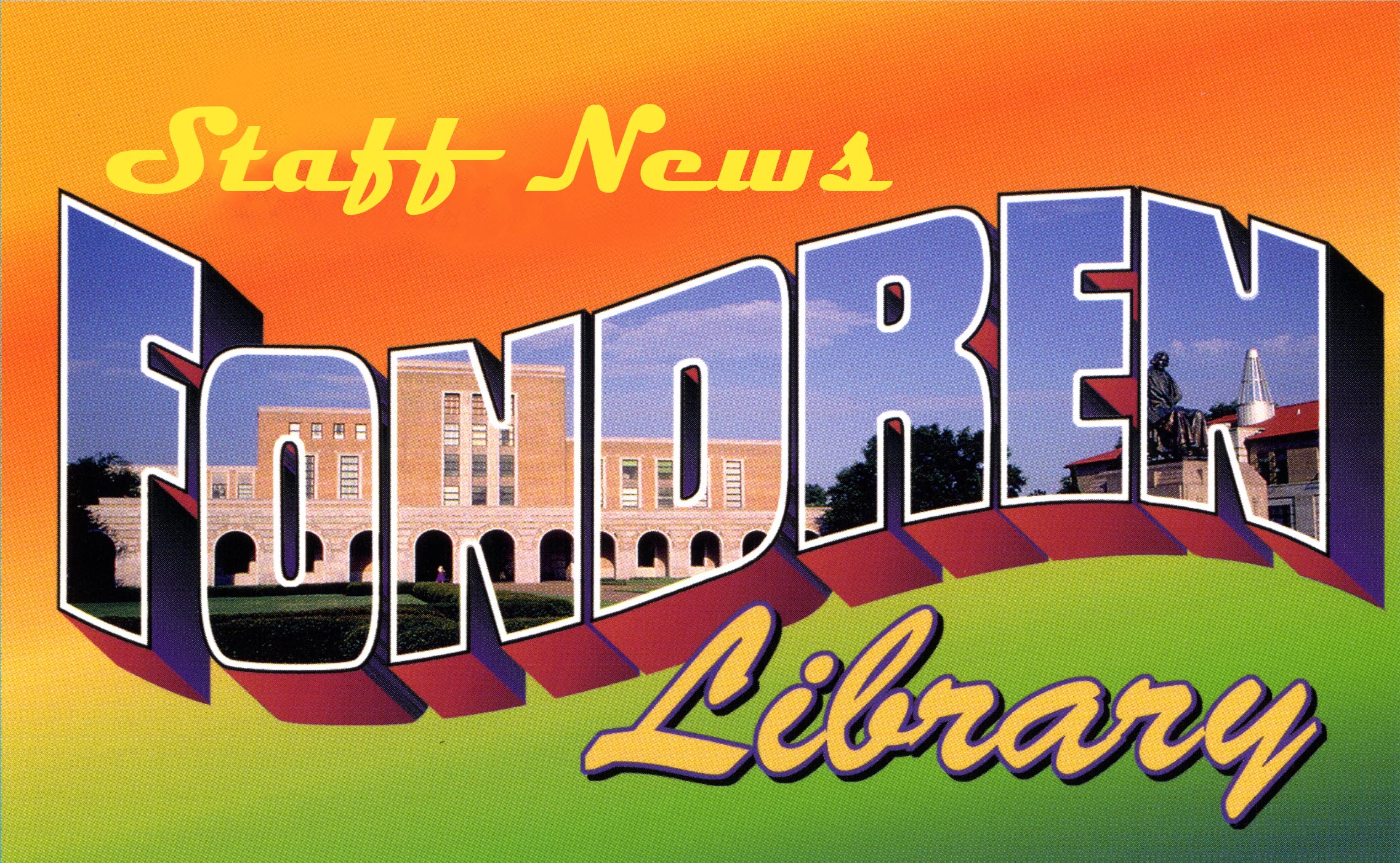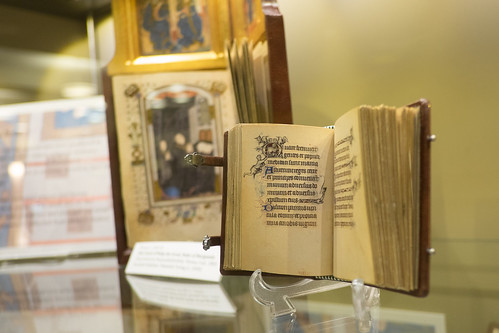As Rice promotes undergraduate research and experiential education, Fondren is sponsoring library-based research opportunities through the new Fondren Fellows program. The inaugural group of Fondren Fellows– three graduate students and one undergraduate– are working on a range of projects, from examining Rice’s research data management environment to mapping Civil War narratives. Learn about their research and dream up your own ideas for potential student projects; the call for the next round of Fellows projects will be going out soon.
Marcel LaFlamme, Author Rights
Graduate student in Anthropology
Mentor: Shannon Kipphut-Smith
This project aims to understand more about how tenure-stream faculty at Rice think about and act on their author rights in connection with their published work. Many faculty want to make their scholarly and professional output more accessible, whether by uploading it to Rice’s institutional depository or by posting it to an academic social network. However, faculty members may not always have a clear understanding of how and where they are permitted to share their work under the terms of the author agreements they have signed. This project uses interviews and document analysis to piece together the values, beliefs, and actually existing practices of faculty members, using participants’ most recent publication as a case study. The results will be used to improve the resources and services that Fondren offers to faculty, and they also stand to fill a gap in the scholarly communication research literature
Ian Lowrie, Developing a Culture of Care for Research Data at Rice
Graduate student in Anthropology
Mentor: Lisa Spiro
Data management has become a more pressing issue for researchers lately, as funding agencies are increasingly requiring researchers to present rationalized data management plans and to ensure access to their research data well after the completion of their funded research. However, institutional support for research data management is still a relatively new field, without established best practices. This project uses interviews with Rice faculty and data librarians at peer institutions to develop insight into the research data management environment at Rice, and develop comprehensive recommendations for how Fondren might best support ongoing efforts to develop policies and infrastructure to support research data management by both faculty and student researchers. It suggests that the existing Rice Digital Scholarship Archive could be profitably used to facilitate sharing and archiving of research data, and identifies a number of key areas where Fondren might assist departments in educating researchers about the importance and technical aspects of rationalized research data management
Neha Potlapalli, FitDesks
Junior, Will Rice College
Mentor: Sue Garrison and Melinda Flannery
During the Fall 2016 semester, Fondren Library will be reviewing alternative seating arrangements for possible student use. This can include bike desks, under desk ellipticals, treadmill desks and more! Alternative desks can improve students’ cognitive function while studying and keep them active. With increasing research showing the dangers of extended sitting, alternative seating arrangements at Fondren can improve student health and grades. Student input is essential to this project to ensure Rice University students will positively benefit from this possible change.
Christina Regelski, Mapping Civil War Narratives
Graduate student in History
Mentors: Amanda Focke and Rebecca Russell
We designed our project, entitled “Mapping Civil War Narratives,” to make the Woodson Research Center’s rich Civil War-related collections more accessible to researchers. I will use ArcGIS to map where people wrote these documents and what locations they discussed in these documents. This interactive “bird’s-eye view” map will give these collections a new dynamism. Researchers will be able to see the multiple geographies of these collections and the interactions between them. A researcher, for example, could follow the particular route of a soldier in the Army of the Potomac, trace the exchange of letters between Confederate officers and Richmond, or use filters to see where men and women discussed race, politics, violence, or disease. This semester, I will focus first on mapping soldiers’ letters to their families in order to build a framework and methodology for the future expansion of this project to all of the Woodson’s Civil War-related collections. Additionally, I will use Esri Story Maps to highlight one particular collection in order to further show the interpretive possibilities of the Woodson’s collections.





























